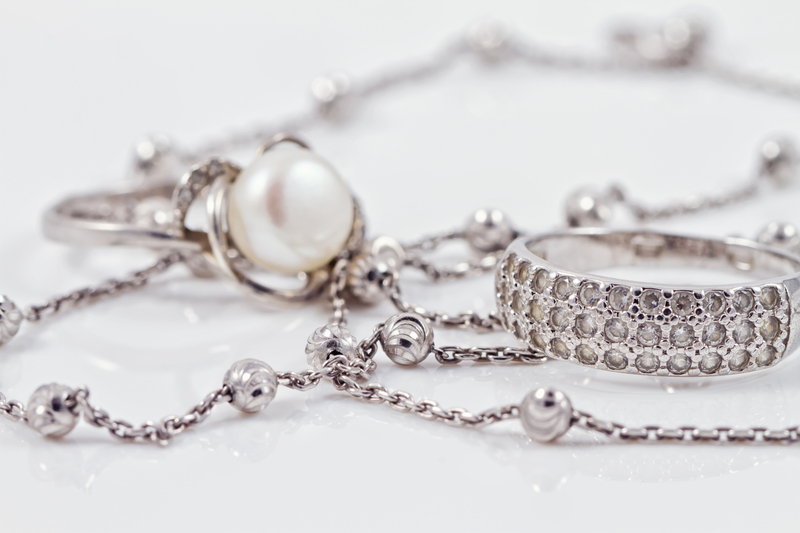How to Break Down Your Bunk Bed
Posted on 11/12/2024
Bunk beds are a practical solution for maximizing space, especially in smaller bedrooms or shared living spaces. However, there comes a time when you may need to disassemble your bunk bed, whether due to a move, an upgrade, or simply a change in room layout. Breaking down a bunk bed might seem like a daunting task, but with the right tools and a systematic approach, it can be done efficiently and safely.
Safety First: Preparing for the Task
Before you dive into disassembling your bunk bed, ensure you have all the necessary tools and safety gear. Basic tools include a screwdriver, an Allen wrench, a rubber mallet, and possibly a pair of pliers. Safety gear such as gloves and safety glasses can protect your hands and eyes from potential injury. Make sure the area around the bed is clear of obstacles and that you have enough space to work comfortably.

Step-by-Step Guide to Breaking Down Your Bunk Bed
Step 1: Remove Bedding and Mattresses
The first and most straightforward step is to strip the bed of all bedding and remove the mattresses. Start by taking off all sheets, blankets, and pillows. Once the bedding is off, carefully lift the mattresses from the top and bottom bunks. This will make the structure lighter and more manageable.
Step 2: Detach Guardrails and Ladders
Most bunk beds come with guardrails on the top bunk and a ladder. Use a screwdriver or an Allen wrench to remove the screws or bolts securing these components. Keep all hardware in a small container or bag to avoid losing any pieces. Once the screws are out, gently detach the guardrails and ladder. If they are stuck, a light tap with a rubber mallet can help loosen them.
Step 3: Disassemble the Bed Frame
The bed frame is usually the most complex part of a bunk bed. Depending on the design, you may need to remove slats or a Bunkie board first. Use your screwdriver or Allen wrench to gently remove the screws or bolts securing the slats or Bunkie board to the frame. Once removed, set them aside.
Next, focus on the main frame. Start by loosening and removing the bolts or screws connecting the frame parts. It's helpful to have a second person hold parts of the frame steady as you work. Carefully separate the frame sections, making sure to keep all hardware in your container.
Step 4: Label and Pack Components
As you disassemble each part, it's a good practice to label the components and pack them in an organized manner. Use masking tape and a marker to label each part, especially if there are similar-looking pieces. Group smaller parts and hardware in labeled bags. This will make reassembly straightforward and prevent any confusion down the line.
Step 5: Store or Transport Your Bunk Bed
Once you've successfully disassembled the bunk bed, consider how to store or transport the components. If you're storing the bed, make sure to keep parts and hardware together. Wrap larger components in blankets or bubble wrap to prevent damage. For transportation, secure all pieces to avoid shifting and ensure they are protected from potential damage during the move.
Common Challenges and Troubleshooting Tips
Disassembling a bunk bed can come with its own set of challenges. Here are a few common issues you might encounter and how to handle them:
Stuck Screws or Bolts
If you find that some screws or bolts are stuck, apply a lubricating oil like WD-40 and let it sit for a few minutes. This can help loosen the hardware and make it easier to remove. If a screw or bolt is stripped, try using pliers to grip and turn it.
Rusty or Old Hardware
Old or rusty hardware can be tough to deal with. In such cases, consider replacing the old hardware with new screws or bolts when you reassemble the bed. You can find replacement hardware at most home improvement stores.
Heavy or Awkward Parts
Some parts of the bunk bed might be heavy or awkward to handle alone. Always enlist the help of another person to manage cumbersome sections. This not only makes the process easier but also ensures safety.

Benefits of Proper Disassembly
Taking the time to properly disassemble your bunk bed has several benefits. First, it reduces the risk of damage to the bed components. Secondly, it makes storage and transportation more manageable. Lastly, when you take care of your bunk bed during disassembly, reassembly will be much simpler and efficient.
Conclusion
Breaking down a bunk bed doesn't have to be a stressful endeavor. By following a systematic approach and ensuring you have the right tools and help, the task can be completed efficiently and safely. The key is preparation, organization, and attention to detail. Whether you're moving, upgrading, or simply rearranging, knowing how to disassemble your bunk bed properly will save you time and effort. Take the necessary precautions, label all parts, and store them carefully to ensure a smooth process from disassembly to reassembly.







